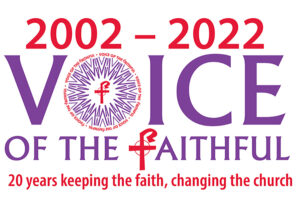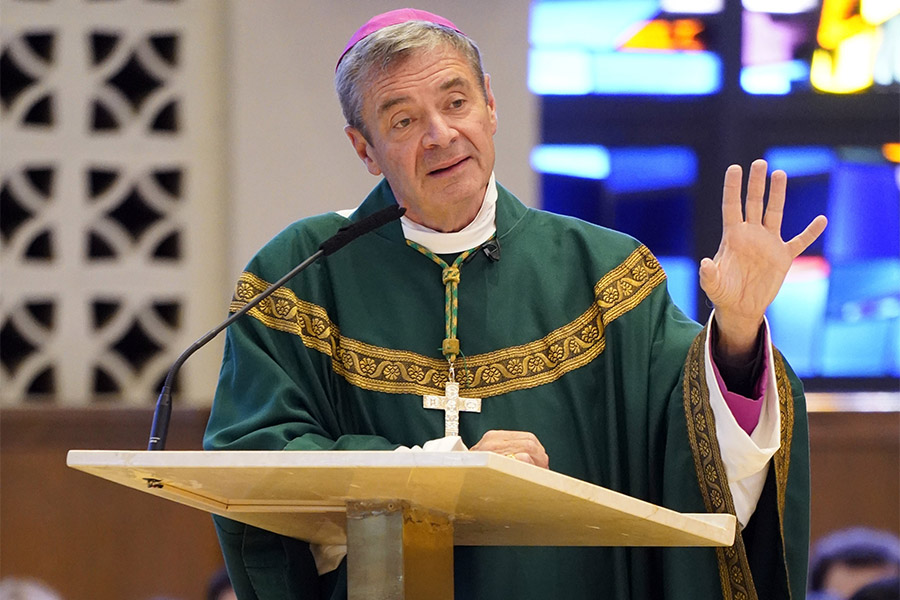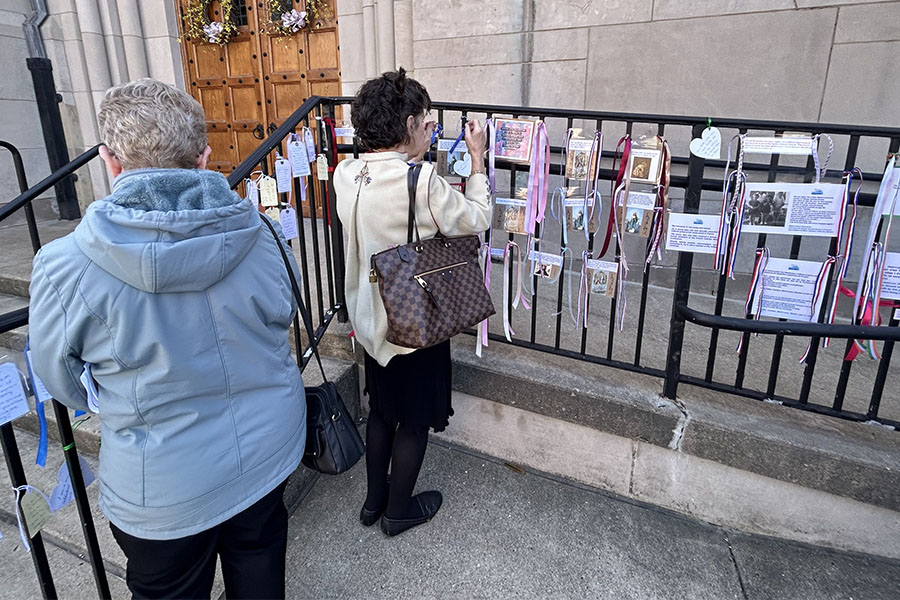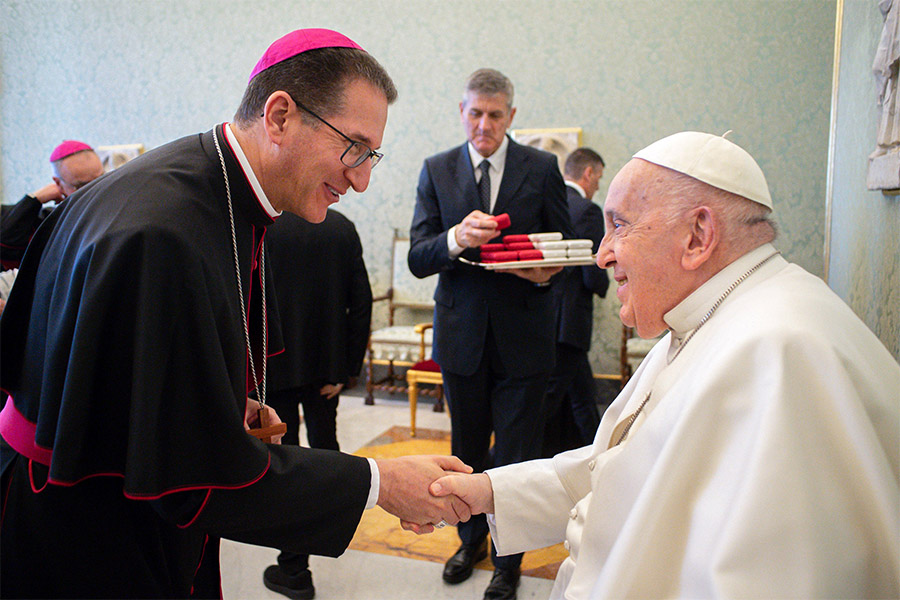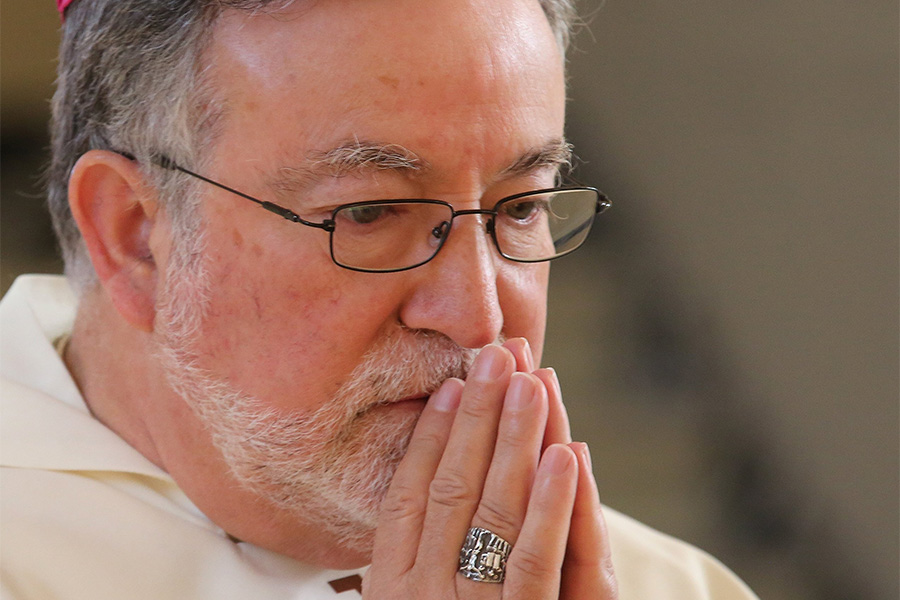The U.S. Conference of Catholic Bishops established the Charter for the Protection of Children and Young People (and the accompanying Essential Norms for Diocesan/Eparchial Policies Dealing with Allegations of Sexual Abuse of Minors by Priests or Deacons) in June 2002. This is one of a series of articles by the Catholic Review to mark the 20th anniversary of the Charter and its impact on safe environments within the church.
Although it was not the first time the media had reported on sexual abuse scandals in the Catholic Church, when the Boston Globe reported extensively on the topic in 2002, it focused the attention of the U.S. bishops and many laypeople on the crisis.
When the U.S. Conference of Catholic Bishops met in Dallas in June 2002, the main agenda item was discussion and approval of the Charter for the Protection of Children and Young People, and the accompanying Essential Norms for Diocesan/Eparchial Policies Dealing with Allegations of Sexual Abuse of Minors by Priests or Deacons.
That same year, a small, grassroots, lay organization formed in the basement of a church in Wellesley, Mass., in the Archdiocese of Boston, the epicenter of the crisis. Voice of the Faithful has since expanded worldwide and now claims more than 30,000 members.
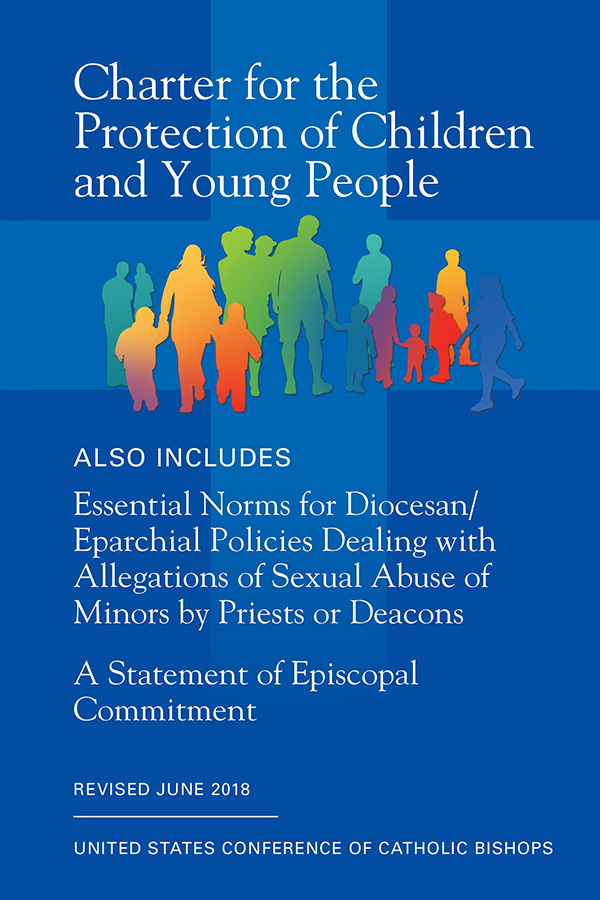
While VOTF started in response to the sexual abuse crisis in the Catholic Church, it now focuses on three primary goals: supporting survivors of clergy sexual abuse, supporting priests of integrity and shaping structural change within the church.
VOTF has focused on transparency and accountability, especially looking at diocesan work on safe environments and child protection and, in the past several years, expanded that effort into looking at diocesan financial integrity.
The goal of structural change is rooted in “working for change within the church, as opposed to working from outside,” said Margaret Roylance, vice president of Voice of the Faithful and chairwoman of its finance working group, which oversees the annual review of diocesan financial transparency.
Patricia Gomez, a board member and co-chairwoman of the Protection of Children Working Group, said VOTF continues to carry out its original mission and goals – the renewal and reform of the church.
“Affirming our baptismal responsibility is really, I think, the foundational element that drew me to Voice of the Faithful,” Gomez said, “because we believe that meaningful lay participation can correct those profound flaws revealed in the human institutional life of the church.”
In its early years, Voice of the Faithful and its local affiliates were sometimes denied the use of church buildings in some Catholic dioceses. Now, its reports on transparency efforts are welcomed by many bishops. When the results of the reports on financial accountability or child protection are released, they hear from dioceses and archdioceses with comments and questions about the methodology and how to improve scores.
“I believe that the response has been increasingly positive because bishops and CFOs (chief financial officers) are recognizing that it’s beneficial to have an independent organization that’s assessing what you’re doing and scoring you, essentially,” Roylance said.
Gomez said VOTF received a letter from a bishop who will be installed in a new diocese soon, who said that once he is on board at his new diocese, he will get together with his safe environment coordinator to ensure the diocese has the best measures possible for protection of children.
She said several diocesan safe environment coordinators contacted the organization to ask for more detail about the report and asking how they can improve their websites and work with VOTF to accomplish that.
In its 2021 financial accountability report, VOTF highlights 10 dioceses which most improved their scores from 2020 to 2021, including one diocese that went from a score of 39 to 96 and another that went from 37 to 92.
Roylance and Gomez, who spoke with the Catholic Review via videoconference, emphasized that the evaluations VOTF does regarding child protection or finances are not audits. They noted that the National Review Board of the USCCB oversees the annual audits of diocesan safe environment efforts conducted by an outside firm and provides advice, review and consultation to the bishops’ Committee for the Protection of Children and Young People.
Canon law requires every diocese to have a finance council, which in the Archdiocese of Baltimore is the Board of Financial Administration. A guide to Diocesan Financial Management best practices developed by the USCCB Committee on Budget and Finance recommends independent audits for all significant diocesan entities and that dioceses “publish the annual financial report of the diocese (including financial statements and footnotes, and the report of the independent auditor) so that it is available to all registered households.”
VOTF’s reports focus on how well dioceses inform the faithful about the work they are doing in child protection and finances. “Pat and I have found in working on these two efforts that they really go hand in hand. Financial transparency and protection of children are sort of two sides of the same coin in a way and what we’re looking for is what the diocese tells the people of the diocese about what they’re doing. It’s the public face of the church and what public information they are providing,” Roylance said.
There is not a one-to-one correlation between dioceses that tend to score well on one matrix also scoring well on the other. However, “many of the high-performing of financial transparency dioceses that also do well in protection of children,” she said.
In VOTF’s 2022 report measuring child protection policies and programs, the first diocesan website review, the Archdiocese of Baltimore scored 92.5 out of 100, making it the third highest in the country and the only archdiocese in the top 10. The report noted that the archdiocese could improve its score by making the USCCB-sponsored audit more visible on the website.
Gomez said where the child protection policies are listed on a website are not as important as how easy it is to find. “We’re looking to gauge how many clicks it takes for the average layperson to find it, and (the archdiocese) did not receive the top scores in that because it required a couple extra clicks; nothing too serious about that,” Gomez said.
“The average overall score achieved by the 177 dioceses was 67 out of a possible 100 points. No diocese attained the maximum 100 points,” the report said. The highest-scoring was the Diocese of Harrisburg, Pa., with 95.5; the lowest-scoring diocese was Shreveport, La., with 22.5.
The Archdiocese of Baltimore has also consistently scored well in the organization’s financial accountability and transparency measures, with scores of 55 and 59 out of 60 in 2017 and 2018, respectively. Since the report switched to a 100-point scale, the archdiocese was graded 94 in 2019, 100 in 2020 and 96 in 2021, losing a few points regarding collection security measures in the most recent report.
The measurements are done by VOTF members who visit diocesan websites with a detailed worksheet to see whether certain information about child protection, safe environments or finances are easy to find. One of the important aspects reviewers look for is whether the names and professional affiliations of members of the finance council and child protection review board are listed.
Roylance noted that in the financial review, VOTF is not asking for things that are required by either canon or civil law, but that the organization believes such transparency represents “good business practices, and in some cases in very important aspects of the diocese which we thought the lay members of the diocese should be aware of.”
She added, “There are some dioceses that haven’t shown an ounce of improvement in five years, but they’re beginning to realize that there’s an advantage in not keeping things secret that don’t require secrecy.”
Gomez believes that VOTF’s efforts to showcase transparency and accountability in both finances and child protection empower the laity. “We’d like not only lay awareness, but also more lay involvement in the governance of the church, and that would particularly fit both these two initiatives.”
Email Christopher Gunty at editor@CatholicReview.org.
Read More Child & Youth Protection
Copyright © 2022 Catholic Review Media
